
A little soap simplifies making 2D nanoflakes
The right combination of surfactant, water and processing can maximize the quality of 2D hexagonal boron nitride for such products as antibacterial films.

A little soap simplifies making 2D nanoflakes
The right combination of surfactant, water and processing can maximize the quality of 2D hexagonal boron nitride for such products as antibacterial films.
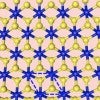
Rice ‘flashes’ new 2D materials.
Rice scientists extend their technique to produce graphene in a flash to tailor the properties of 2D dichalcogenides, quickly turning them into metastable metallics for electronic and optical applications.
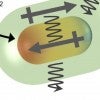
‘Soft’ nanoparticles give plasmons new potential
Bigger is not always better, but here’s something that starts small and gets better as it gets bigger.
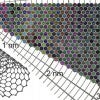
Sheets of carbon nanotubes come in a rainbow of colors
Nanomaterials researchers in Finland, the United States and China have created a color atlas for 466 unique varieties of single-walled carbon nanotubes.
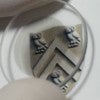
Rice physicist shares grant to advance imaging
The lab of physicist Junichiro Kono will share in a $1 million grant from the Chan Zuckerberg Initiative to improve imaging of proteins, cells and tissues.
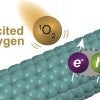
Chemists get peek at novel fluorescence
Rice chemists find a second level of fluorescence in single-walled carbon nanotubes. The phenomenon may be useful in solar energy and optoelectronic applications.

Rice finds path to nanodiamond from graphene
Rice University researchers expand their theory on converting graphene into 2D diamond, or diamane.
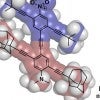
Rice rolls out next-gen nanocars
Rice researchers continue to advance the science of single-molecule machines with a new lineup of nanocars, in anticipation of the next international Nanocar Race in 2022.

A trillion turns of light nets terahertz polarized bytes
Nanophotonics researchers at Rice University, the Polytechnic University of Milan and the Italian Institute of Technology have demonstrated a novel technique for modulating light at terahertz frequencies with plasmonic metasurfaces.

NSF renews Rice-based NEWT Center for water treatment
The National Science Foundation renews the Rice-based Nanotechnology Enabled Water Treatment Center for five years. The Engineering Research Center is dedicated to enabling access to clean water around the world.
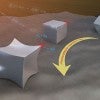
Shape matters for light-activated nanocatalysts
Points matter when designing nanoparticles that drive important chemical reactions using the power of light, according research from Rice University's Laboratory for Nanophotonics.
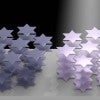
Ambient light alters refraction in 2D material
Microscopic crystals in tantalum disulfide have a starring role in what could become a hit for 3D displays, virtual reality and even self-driving vehicles.